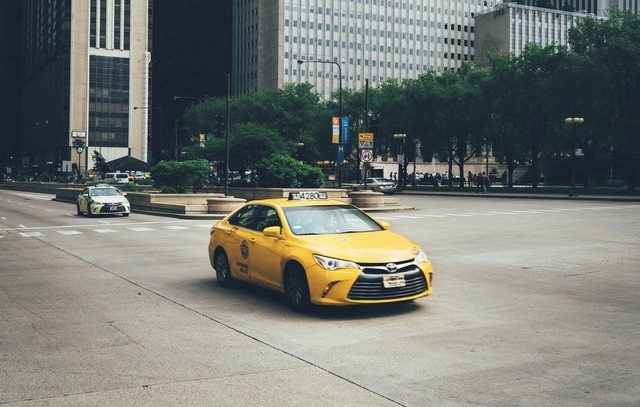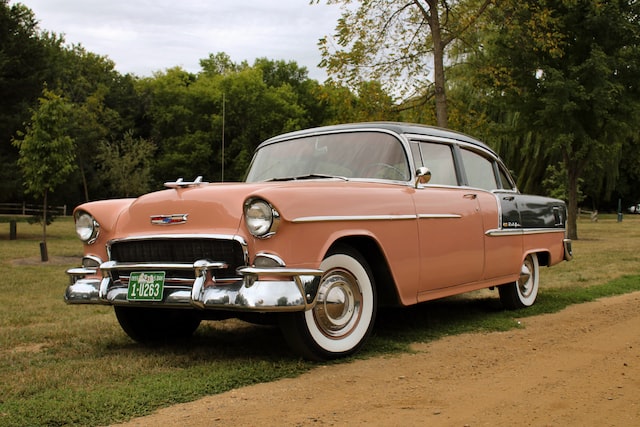When we think about speed limits, we usually think of the maximum speed at which you are allowed to go on certain roadways, as well as the sort of vehicle you are driving. We all recognize the need of maintaining a safe speed limit: our own and other road users’ safety is at risk. We also recognize that driving above the speed limit can result in points on your license, a fine, or even disqualification. Is it possible, though, to be penalized for traveling too slowly? This article will cover all you need to know about California speed limits, significant speed laws, and speeding.
Speeding – California Speed Limits
It’s not worth it to speed. You may save a few minutes, but your chances of getting involved in a car accident are greatly increased. The degree of injuries in an accident is strongly related to speed; the faster you’re driving, the more likely the crash will be serious or deadly.
As your speed rises, your stopping distance increases, making it less likely that you will be able to stop in time to avoid a hazard. One of the leading causes of road deaths is speeding and aggressive driving.
Why should you adjust your driving speed based on the conditions?

Each driver is responsible for knowing the speed limit and driving at or below it safely.
You must drive slower than the posted speed limit in less favorable conditions so you can stop in time to avoid a hazard.
The following are examples of road conditions:
- The road surface may be dry, wet, or narrow
- Rain, fog, or snow are all possibilities
- Traffic is going slowly
- Pedestrians in the area of the road.
To gain more information about CA DMV Fines & Limits test, let’s take our free California DMV test to strengthen your knowledge and drive safely on the road!
What are the four-speed laws?
Maximum speed law
This law was passed to limit the number and severity of car accidents. It specifies that driving faster than the posted speed limit is prohibited under all circumstances. This is referred to as speeding.
When passing other cars, many drivers break the law. Make sure you don’t make the same mistake — you’re never permitted to go faster than the posted speed limit!
Prima Facie speed law
The Prima Facie Speed Law establishes maximum speed limits in regions where speed limit signs are not displayed, but where they should be understood and obeyed. You risk receiving a penalty if you do not obey the speed limit. For example, if you are driving 30 mph on a street in a neighborhood with no written speed limits, you are breaching Prima Facie.
The Prima Facie speed limit is 25 mph in school zones, residential areas, and business districts. If any marked signs are indicating otherwise, obey them. Some school zones, for example, may limit the speed to 15 mph. The purpose of the Prima Facie Speed Law is to guarantee that everyone drives at a safe speed based on the environment they are in, even if no signs are there.
Basic speed law
According to the ‘Basic Speed Law,’ you should never drive faster than is safe under the circumstances. Drivers in California are not allowed to exceed a safe speed for the present road and weather circumstances, according to the state’s basic speed law. Even if you are following the legal speed limit, if the officer believes that you are driving too fast for the number of cars on the road, the road surface, the general flow of traffic, the weather, and/or the presence of cyclists or pedestrians, you may be issued a ticket.
Even if you’re driving below the speed limit in terrible weather, such as heavy fog, you may be charged by law enforcement for driving too fast for the conditions.
Here are four factors to consider while deciding on a safe speed:
- What is the average speed of other drivers? Are you driving more quickly?
- Is there a great deal of traffic?
- What are the current conditions? Is the road surface in good or terrible condition? What’s the weather like today?
- Is it a city or a rural setting? Are there any pedestrians or other vulnerable road users nearby?
Minimum speed law
It is possible to receive a ticket for driving too slowly, contrary to popular belief. California’s Minimum Speed Law prevents vehicles from driving too slowly, as this interrupts traffic flow and puts other cars at risk. There are various minimum speed restrictions posted around the state, although they are not common.
In terms of the Basic Speed Law, it is ok to lower your speed while driving; nevertheless, considerable reductions present a risk. Take into account any environmental elements that may affect your speed, and remember to drive safely at all times.
What is the maximum speed limit in California?

What is the speed limit in California? In favorable weather and road conditions, speed restrictions indicate the maximum permissible speed. The following are the highest speed limit in California:
- When passing streetcars, buses, or trolleys halted at a law enforcement/traffic signal intersection – 10 mph
- 10 mph in safety zones
- 15 mph in alleyways
- 15 mph at blind intersections
- 25 mph in residential and business districts
- While children are outside, within 500 to 1000 feet of a school — 25 mph
- 55 mph on two-lane undivided highways
- 65 mph on most California highways.
What is the minimum speed limit in California?
It is illegal to drive too quickly, but it is also illegal to drive too slowly. If you obstruct or delay traffic, you might be punished under California’s minimum speed law. Because other road users will not expect you to drive slowly, it might be equally as dangerous as speeding. Keep to the right if you can’t travel with the flow of traffic so that other cars can pass on your left.
Like their maximum speed limits, the minimum speed limit in California is intended to improve road safety. Rather than accelerating and braking, maintaining a constant pace helps to keep traffic moving. This is especially crucial where stopped traffic may make it difficult for emergency vehicles to pass through, such as in tunnels.
What’s the speed limit on the freeway in California?
What’s more, you may wonder? That’s the speed limit on the California freeways. The majority of freeways in California have a 65 mph speed limit. For specific vehicles, certain modern roads have upped the speed limit to 70 mph; these routes feature a 70 mph posted speed restriction sign. Unless a posted sign indicates otherwise, two-lane undivided freeways have a speed limit of 55 mph.
What are advisory speed limits?
In good weather, advisory speed restrictions are used to indicate the maximum speed at which it is safe to travel. In these speed zones, it is suggested that you decrease your speed temporarily and drive cautiously to ensure that you get through safely.
Before bends, curves, and crests, for example, speed limit signs are regularly displayed.
Read more >> California DMV License Renewal: A Step-by-Step Guide in 2022
How much is the fine for speeding in California?

In California, breaching speed restrictions can result in a punishment of up to $100. When penalty assessment and other expenses are included, the fine might be three times as expensive. The exact amount of the fine varies per region. Your driver’s license may potentially be suspended for up to 30 days.
Excessive speeds may result in various legal issues, such as violations of Street Racing or Reckless Driving laws. Driving 15 miles per hour above the stated speed limit is considered reckless driving, and it may result in hefty fines and possibly prison time.
The state of California was created for road trips. A well-connected network of more than 50,000 miles of high-quality roads and freeways connects nearly every part of the state, with side routes connecting to even more off-the-beaten-path destinations. Highway 1 along the Pacific Coast, Route 66, and Avenue of the Giants are just a few of the notable highways (Highway 101 winding through towering redwoods). Interstates 5 and 80, for example, are workhorses, delivering drivers (and trucks) as quickly as possible up and through the state. Even these heavy-lifters, though, may lead you to unexpected areas.
There are four primary speed laws in California: Basic, Prima Facie, Maximum, and Minimum. With a population of almost 40 million people, each speed law has its own set of requirements for drivers. The overarching purpose is to ensure that everyone on or around the road is safe. The article has already helped you in understanding all of California’s speed limits and laws. Remember the basic regulations of the road no matter where you drive to stay safe at all times.
To strengthen your knowledge about these requirements, let’s get started with our DMV practice test and the official California driver handbook to always stay safe on the road.

UT Utah License Renewal: A 2024 Comprehensive Guide
Discover the ultimate guide to Utah license renewal! This comprehensive guide delves into the intricacies of renewing your driver's license in Utah,...
February 13, 2023

South Carolina S.C. Driver's License Renewal
The South Carolina S.C. driver's license renewal process is designed to be comprehensive, taking into consideration eligibility requirements, renewal methods,...
February 13, 2023

Pennsylvania PA DMV License Renewal: A 2024 Full Guide
The Pennsylvania PA DMV license renewal process is designed to be comprehensive, taking into consideration eligibility requirements, renewal methods,...
February 10, 2023
